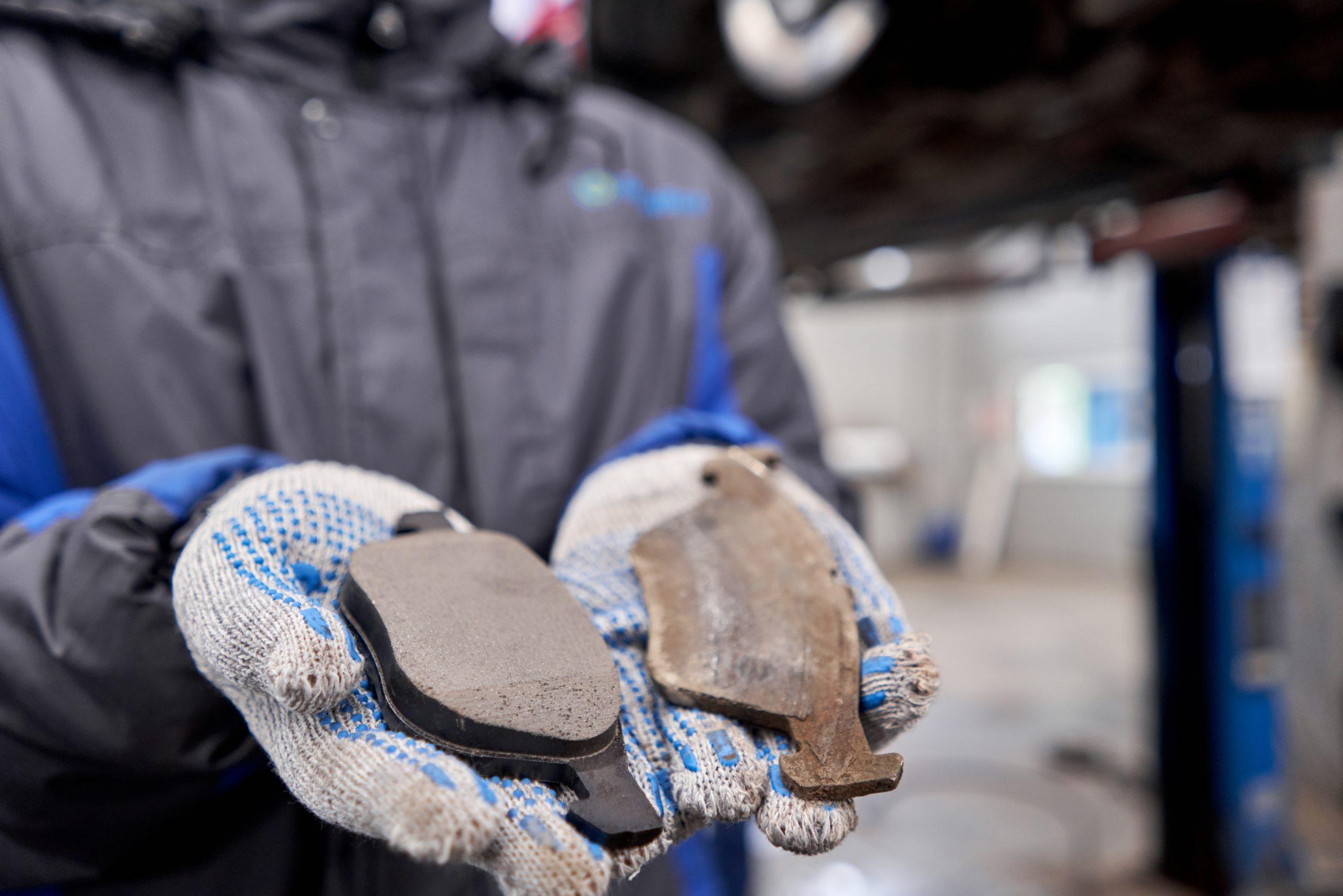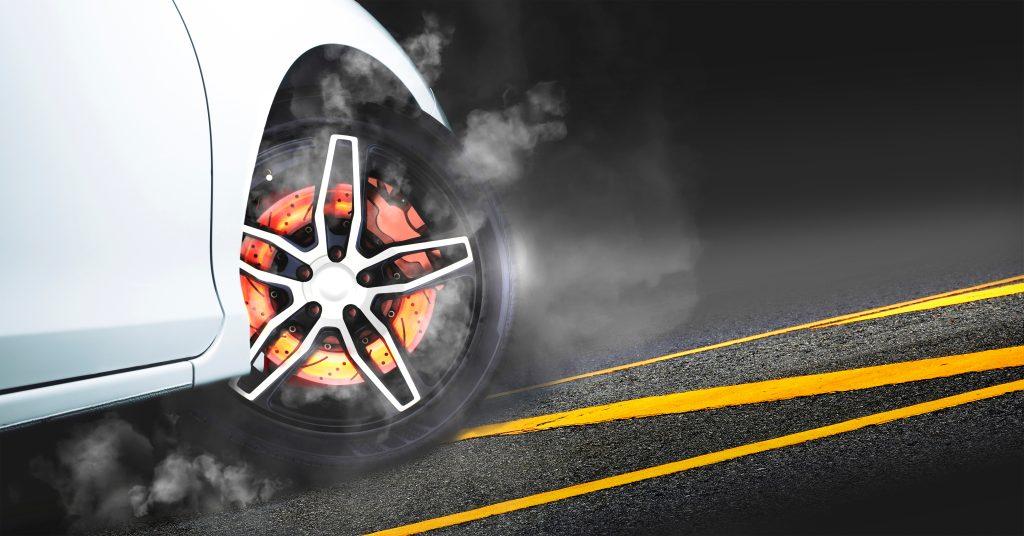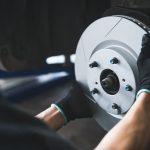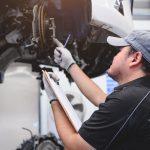
Extending Your Brake Lifespan: Essential Brake Maintenance Tips for Longer-Lasting Brakes
- Harbor Brakes
- December 7, 2023
- Brakes
- brake fluid, brake pads, brake repair, brake rotors, brake service, brakes, brakes near me, disc, pads, replace brakes near me, rotors
Proper brake maintenance is crucial for the longevity of your braking system. By following these essential brake maintenance tips, you can ensure that your brakes last longer, drive safer, and save money on brake repairs.
Brake pads have a lifespan of 15,000-80,000 miles, depending on various factors. However, with regular maintenance and the right driving techniques, you can extend their lifespan significantly. Here are some key tips to keep in mind:
Key Takeaways:
- Drive slow to minimize wear and tear on brake pads and rotors.
- Use engine braking in hilly areas to preserve brake pads and rotors.
- Get routine brake maintenance inspections to identify any issues early.
- Reduce vehicle weight to lessen brake wear.
- Practice defensive driving to avoid sudden stops.
By implementing these tips into your driving habits and scheduling routine brake maintenance, you can ensure that your brakes stay in optimal condition for a longer time. Drive safer and save money on brake repairs by taking care of your braking system.
Driving Habits That Extend Brake Lifespan
When it comes to extending the lifespan of your brakes, your driving habits play a crucial role. By adopting a few simple techniques, you can minimize wear and tear on your brake pads and rotors, saving you money on brake services and repairs in the long run.
One key aspect to consider is the speed at which you drive. Stopping abruptly at high speeds generates more friction and heat, leading to rapid brake pad deterioration. To mitigate this, it’s important to avoid sudden braking and instead drive at a moderate speed, especially in heavy traffic.
Another technique that can help prolong the life of your brakes is engaging engine braking. By downshifting and using your vehicle’s engine to slow down on downhill slopes or when hauling heavy loads, you relieve some of the braking force from your brake pads and rotors.
Defensive driving is also crucial in preserving your braking system. Maintaining a safe following distance and anticipating traffic flow can help you avoid sudden stops and unnecessary wear and tear on your brakes. Remember, the smoother your driving style, the longer your brakes will last.
Driving Habits That Extend Brake Lifespan:
- Drive at a moderate speed to minimize friction and heat generation.
- Avoid sudden braking, especially at high speeds.
- Engage engine braking on downhill slopes and when hauling heavy loads.
- Practice defensive driving and maintain a safe following distance.
By incorporating these driving habits into your routine, you can significantly extend the lifespan of your brakes. Not only will you enjoy safer rides, but you’ll also save money on brake repairs and services.

Note: The table below showcases the average lifespan of brake pads and rotors depending on driving habits and usage frequency:
| Driving Habits/Usage Frequency | Average Brake Pad Lifespan | Average Brake Rotor Lifespan |
|---|---|---|
| Heavy braking, aggressive driving | 15,000 – 30,000 miles | 50,000 – 60,000 miles |
| Moderate braking, average driving | 30,000 – 50,000 miles | 60,000 – 80,000 miles |
| Light braking, gentle driving | 50,000 – 80,000 miles | 80,000+ miles |
Routine Brake Maintenance for Longevity
Regular brake maintenance is essential for extending the life of your brakes. By taking proactive measures, you can ensure the optimal performance of your braking system and save money on potential brake repairs. Here are some key brake maintenance tasks to prioritize:
1. Brake Inspections
To keep your brakes in top condition, it’s recommended to have them inspected regularly. A skilled mechanic can assess the condition of your brake pads, rotors, and other components, identifying any signs of wear or damage. By identifying and addressing issues early on, you can prevent further damage and save yourself from costly repairs down the line.
2. Brake Fluid Flush and Replacement
Brake fluid plays a vital role in the effectiveness of your braking system. Over time, brake fluid can become contaminated or contaminated with moisture, leading to reduced braking performance. It’s essential to have your brake fluid flushed and replaced according to the manufacturer’s recommendations. This will help maintain optimal brake function and prolong the life of your brakes.
3. Brake Pad Replacement
Brake pads wear down over time and will eventually need to be replaced. During routine brake maintenance, your mechanic will assess the thickness of your brake pads and determine if they need replacement. Brake pads that are too thin can compromise your ability to stop safely, so it’s important to address this issue promptly.
| Brake Maintenance Tasks | Frequency |
|---|---|
| Brake Inspections | Every 6 months or 6,000-10,000 miles, or as recommended by your mechanic |
| Brake Fluid Flush and Replacement | Every 2 years or 25,000 miles, or as recommended by your vehicle’s manual |
| Brake Pad Replacement | As needed, typically every 30,000-70,000 miles |
By following these routine brake maintenance tasks, you can ensure the longevity and optimal performance of your brakes. Remember to consult a trusted auto repair shop for all your brake maintenance needs, as they have the expertise and experience to keep your braking system in excellent condition.
Driving Techniques That Prolong Brake Lifespan
Proper driving techniques play a crucial role in extending the lifespan of your brakes. By implementing these tips, you can minimize brake wear and ensure optimal performance:
1. Maintain a Safe and Legal Speed Limit
Driving at a safe and legal speed limit reduces the energy and brake material required to stop your vehicle. It also allows for better control and maneuverability, preventing sudden stops that can contribute to brake wear.
2. Practice Coasting
Ease off the gas pedal and allow your vehicle to coast before applying the brakes, especially when preparing to turn or encountering a stop sign or slow-moving traffic. This technique reduces the strain on your brakes, minimizing wear and tear.
3. Use Only Your Right Foot
Avoid continuous brake pressure and premature wear by using only your right foot for both acceleration and braking. This technique ensures that you release the brakes completely when not in use, preserving the brake pads and system.
4. Try Engine Braking
When descending steep hills or mountains, consider using engine braking instead of solely relying on your brakes. Engine braking involves downshifting to a lower gear, which helps reduce strain on the braking system and prolongs brake lifespan.
5. Increase Your Following Distance
By maintaining a greater following distance between your vehicle and the one ahead, you can minimize the need for sudden stops. This proactive approach reduces brake wear and allows for smooth, gradual braking.
6. Keep Your Vehicle Light
Reducing the weight of your vehicle can lessen the kinetic load on your brakes. Remove any unnecessary items from your vehicle and avoid carrying excess weight, as this can increase brake wear and decrease overall braking performance.
Implementing these driving techniques not only prolongs the lifespan of your brakes but also contributes to a safer driving experience. Remember to incorporate these practices into your everyday driving habits for optimal brake maintenance and performance.

Conclusion
Proper brake maintenance and driving techniques are crucial in extending the lifespan of your brakes. By following these tips, you can ensure safer rides and save money on brake repairs. Regular inspections and timely replacements of brake pads and rotors will help maintain an optimal braking system.
Driving at a moderate speed and using engine braking in hilly areas are effective ways to preserve your brake pads and rotors. Additionally, practicing defensive driving and keeping your vehicle light will minimize unnecessary wear and tear on your brakes. Remember, routine brake maintenance is essential, so make sure to get your brakes inspected regularly.
By implementing these tips and following recommended maintenance practices, you can maximize the longevity of your brakes. Don’t neglect your brake system – consult with a reliable auto repair shop for all your brake service needs. Take care of your brakes, and they will take care of you on the road!
FAQ
How often should I get my brakes inspected?
It is recommended to have your brakes inspected during routine maintenance visits.
What does a brake maintenance inspection involve?
A skilled mechanic will check brake pads, rotors, and flush/replace brake fluid if necessary.
How can routine brake inspections save me money?
Routine inspections help identify and replace brake pads before they completely wear out, saving you money on costly brake repairs.
How does driving speed affect brake pad wear?
Stopping at high speeds generates more friction and heat, causing brake pads to break down rapidly.
How can I preserve my brake pads and rotors?
Using engine braking on downhill slopes or when hauling heavy loads helps preserve brake pads and rotors.
What driving habits can prevent unnecessary wear and tear on brakes?
Defensive driving, maintaining a safe following distance, and avoiding sudden stops can prevent unnecessary wear and tear on your braking system.
How can I reduce brake wear while driving?
Maintain a safe and legal speed limit, practice coasting before applying the brakes, use only your right foot for accelerating and braking, and increase your following distance to minimize the need for sudden stops.
Does the weight of my vehicle affect brake wear?
Yes, reducing vehicle weight by removing unnecessary items and avoiding excess weight can lessen brake wear.
How often should I flush my brake fluid?
It is recommended to regularly flush brake fluid every two years or 25,000 miles to maintain optimal brake performance.
How do proper brake maintenance and driving techniques extend the lifespan of brakes?
By following these tips, such as driving at a moderate speed, using engine braking, getting routine brake maintenance, practicing defensive driving, keeping your vehicle light, and regularly inspecting and replacing brake pads and rotors, you can ensure safer rides and save money on brake repairs.
Source Links
- https://debrouxautomotive.com/5-tips-to-extend-the-life-of-your-brakes/
- https://www.ridetime.ca/blog/the-top-6-ways-to-extend-the-life-of-your-brake-pads/
- https://vatire.com/car-maintenance-tips/7-ways-to-make-your-brakes-last-longer/

